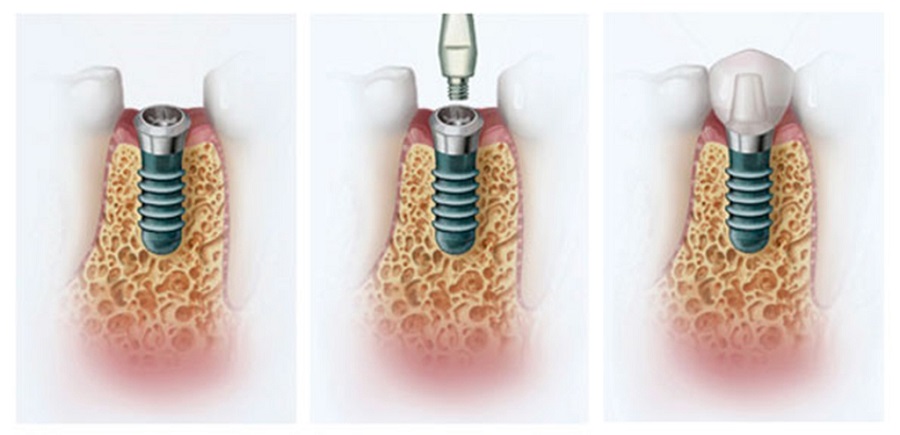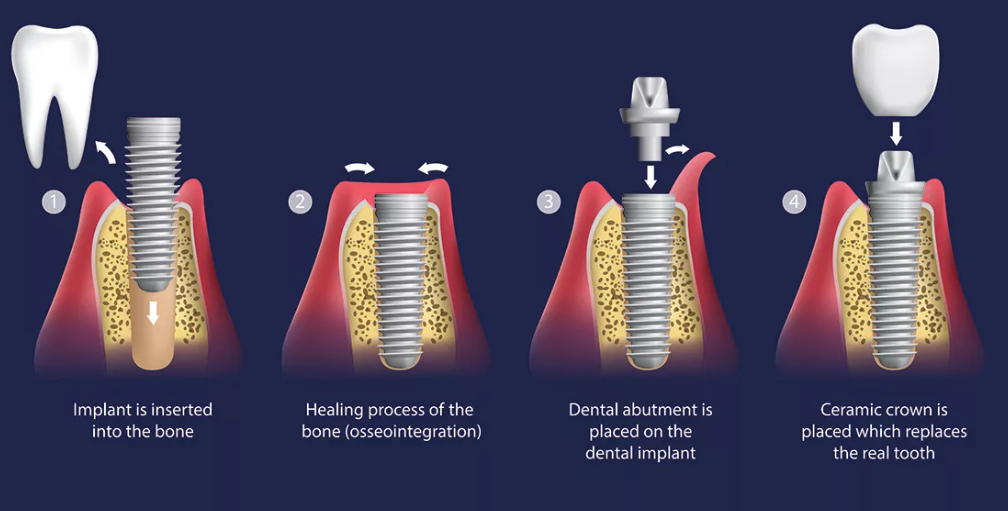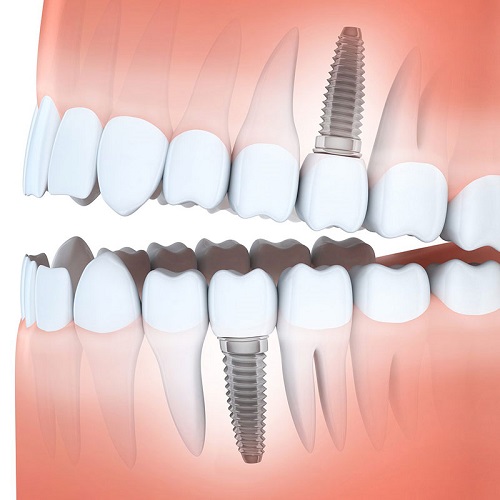How dental implantation goes: stages, terms, and features of the procedure.
Losing one or more teeth makes a person feel uncomfortable, and it is discomfort when eating and communicating with others. The absence of teeth is an aesthetic problem and a health risk. The loss of molars increases the load on adjacent and opposite teeth, leading to their loosening, a change in bite, and more rapid caries development. A dental implant is a perfect way to have a charming smile.
High-quality dental implantation is the key to the long-term preservation of the health and attractiveness of a smile. We will tell you about the specifics of the procedure, the rules for choosing the type and material, and explain step by step how the implant is placed and what the cost of the implant depends on.
Characteristics of implants and their design
Implantation is a mini-operation during which an implant is implanted into the gum. It replaces the root of the tooth, on which the crown is subsequently inserted. Manufacturers use different materials, each having its density, strength, and service life. The implant's cost depends on the material and how quickly it will take root.

The design has three levels:
- Root implanted in the gum. It is the frame of the implant, which is usually made of titanium and its alloys or zirconium dioxide. The latter type is more expensive and is used if the patient is allergic to metal.
- Abutment — an adapter that serves as a connector of the root and crown.
- The crown itself. It imitates a tooth and is located on an implant - most often ceramic, but there are other types.
Types of implants: what to pay attention to when choosing
Dental implants differ in the way they are installed. The doctor will offer the optimal choice based on the characteristics of your health, preferences, and other criteria. But what should you, as a patient, know about the varieties:

- Biological compatibility. It depends on how easily the implant will take root. The best dental implants are made using Grade 5 titanium or its alloys or made of zirconium dioxide.
- Form. The most optimal is the conical shape. This type of implant allows you to distribute the load when eating.
- Thread. Different threads allow the implant to be installed in bone tissue of different densities. It is better to prefer a design with no polished neck. They will last longer.
- Implant surface. It is better if it is porous than smooth — this contributes to a higher implant survival rate.
- Use. Different types of implants serve distinct purposes. For example, mini dental implants are convenient small structures; in most cases, they cannot fully replace a tooth. They are usually used to improve the fixation of a removable prosthesis or when more massive implants can not be installed.
Stages of dental implantation
The doctor determines the need to install dental implants after consultation. The procedure may have contraindications and features known only at the examination.
There are different ways to install an implant:
- Simultaneous implantation, when an artificial root is installed immediately after tooth extraction.
- With immediate loading. That is a fast tooth implant when the entire structure is installed in the jaw bone. A temporary prosthesis is immediately placed on the implant without waiting for its engraftment.
- Two-stage implantation. The traditional and most common but longer-term type of treatment.
Classical two-stage endoprosthetic consists of the main stages of dental implantation, which are shown in the diagram:

Step-by-step dental implantation looks like this:
- Initial examination and diagnosis. Even the best dental implants may not take root when the patient has a chronic disease. Therefore, if the doctor has doubts, he can prescribe tests before the procedure to assess the condition of the bone tissue. That will help to eliminate problems that may interfere with the implantation. After the preparatory procedures, the doctor will tell you how to choose a dental implant and advise on prices.
- 3D modeling. It is carried out on request. With its help, you can try different types of implants, depict the angle of inclination and evaluate the stability of the posts to the load.
- The surgical stage. That is a painless implant placement operation performed under local anesthesia. It takes about 40 minutes. The doctor dissects the gum and forms a hole of the right size with the help of drills. Then an implant is inserted into it; a plug is placed on it, protecting it from the penetration of microbes, after which the gum is sutured. The stitches are removed on days 7-14.
- The orthopedic stage stage is the installation of an abutment and a crown. At this stage, the implantologist takes casts, based on which crowns are made in the dental laboratory. Then they are put on implants. It is best if implants with screw fixation are used — that is, the adapter and the crown form a single whole. Unfortunately, this is not possible in all cases.
Timing of implant installation
On average, all stages of dental implantation take from 3-4 months to six months; in some cases, when additional preparatory procedures are required, the period may last up to a year. Your dentist will determine the exact time needed for implant installation. He will analyze dental health history and the characteristics of the patient’s organism. In our clinic, you can get a sufficient free consultation and an individual treatment plan with stages, terms, and costs.

